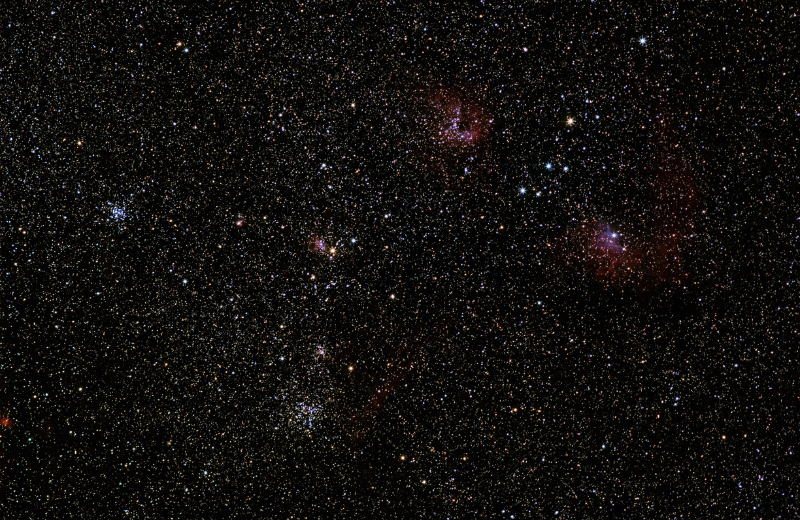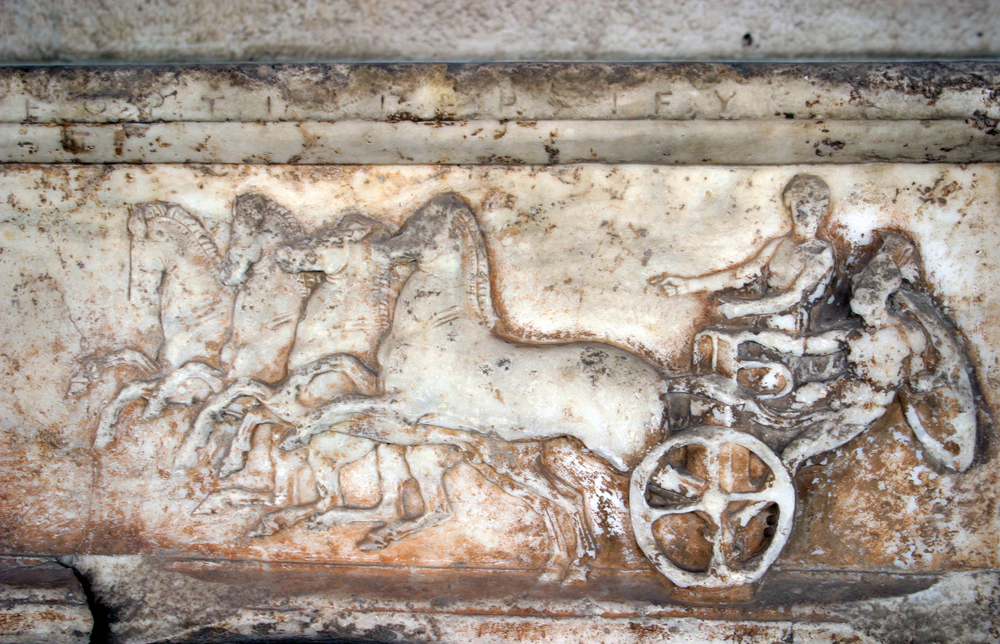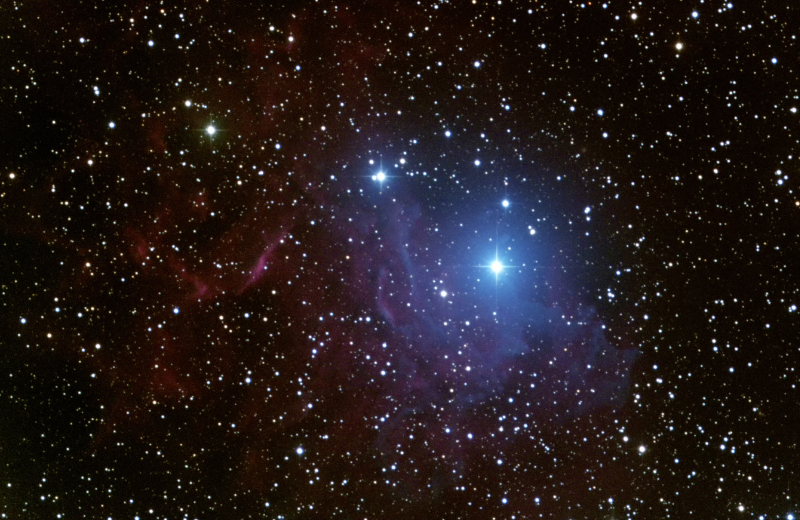Auriga, or "the Charioteer" is a beautiful constellation that holds captivating stories, intriguing astronomical features, and a unique position in the sky. This guide shares its myths, stars, and where to find it, providing insights that make it easy to appreciate this ancient constellation.
Jump to:
Recommended for you!
Best SellersWhat is the Auriga Constellation?
The Auriga constellation is located in the Northern Hemisphere and is most visible during the winter months. The name “Auriga” is Latin for “Charioteer,” symbolising a character who drives a chariot through the heavens. Auriga is often depicted in myth as a man holding the reins in one hand and a goat in the other, with two “kids” nestled nearby, adding to its distinctive shape in the sky.
As one of the 88 modern constellations recognised by the International Astronomical Union, Auriga spans a large section of the sky and contains some exceptionally bright stars and intriguing deep-sky objects.
What Does Auriga Look Like?

The shape of Auriga resembles a large pentagon or irregular hexagon, easily recognisable by its bright stars. The constellation is particularly notable for its brightest star, Capella, which is one of the brightest in the entire night sky. Capella serves as a helpful guide for locating the constellation, especially when conditions for stargazing are ideal.
How Far is the Auriga Constellation from Earth?
While we can’t measure the distance to an entire constellation, the individual stars within Auriga vary in distance. Capella, Auriga's brightest star, is about 42.9 light-years away from Earth, making it relatively close in astronomical terms. Other stars in Auriga are further out, contributing to the constellation's vast reach across our night sky.
The Auriga Constellation Myth

The mythology behind Auriga is rich and varied, with connections to Greek and Roman tales. In Greek mythology, Auriga is often linked to the story of a charioteer named Erichthonius, who was an ancient king of Athens. Erichthonius was known for inventing the four-horse chariot, a skill so valued that the gods immortalised him in the stars. He is frequently depicted holding a goat, symbolised by the star Capella, along with her two kids, represented by the stars Haedi I and Haedi II.
Another myth connects Auriga to Hephaestus, the god of fire and metalworking, who was often carried in a chariot due to his lameness. This image of the charioteer in the sky adds to the constellation’s symbolic legacy of strength, innovation, and protection.
Auriga's Stars
Auriga is home to a range of fascinating stars, each adding to the constellation’s charm and significance:
- Capella: The brightest star in Auriga and one of the most luminous stars in the entire sky. Capella shines with a golden-yellow hue and is, in fact, a star system made up of two giant stars orbiting each other. This impressive brightness has made Capella a valuable reference for celestial navigation throughout history.
- The Kids (Haedi I and Haedi II): Close to Capella, these two stars symbolise the mythological "Kids," or baby goats, held by the charioteer. Haedi I and Haedi II contribute to Auriga’s distinct structure, making the constellation easier to identify in the night sky.
- Menkalinan: Another notable star within Auriga, adding to the constellation’s visual appeal. Menkalinan stands out as a bright star within the constellation’s pentagon shape.
- Elnath: Situated on the edge of Auriga, Elnath is actually shared with the constellation Taurus. This link between Auriga and Taurus highlights the constellation’s unique positioning and offers an intriguing visual crossover when viewed in the sky.
Nebulae in the Auriga Constellation

Auriga is home to several notable nebulae, which are regions of gas and dust where new stars are born. Among these, the Flaming Star Nebula (IC 405) stands out as a beautiful and vivid nebula. Located close to the star AE Aurigae, it offers a glowing red and blue pattern that makes it a favourite target for astrophotography.
There’s also the Tadpole Nebula (IC 410), named for its distinctive shape. The nebula’s “tadpoles” are actually dense regions of gas that appear to wriggle across the sky in long-exposure photos, creating a unique sight. The presence of these nebulae makes Auriga a prime region for those interested in observing deep-sky objects.
Finding Auriga in the Sky
Auriga is best seen in the winter months, particularly from December to February, when it reaches its highest point in the northern sky. This is an excellent time to look for it, as the constellation shines brightly against the crisp winter backdrop, making it ideal for stargazing.
Locating Auriga
To locate Auriga, start by finding the well-known constellation Orion. Draw an imaginary line from Orion’s Belt up and to the left, where you’ll encounter the bright golden star, Capella. Capella is the key marker of Auriga and one of the brightest stars in the sky. Once you’ve spotted Capella, look for a pentagon shape surrounding it, which forms the main structure of the Auriga constellation. You’ll also see the "Kids," two nearby stars, adding a charming detail to its pattern.
Auriga’s Neighbours
Auriga sits close to the constellations of Taurus and Perseus, forming part of a group of constellations often visible together. The star Elnath, located on Auriga’s boundary, is shared with Taurus, linking the two constellations.
Best Viewing Conditions
For the clearest view of Auriga, find a dark, open space away from city lights on a crisp, moonless winter night. Once you locate Orion, follow the path to Capella, and the rest of Auriga will reveal itself, standing out beautifully among its celestial companions.
Recommended for you!
Best SellersFun Facts About Auriga
- Auriga’s Name Origin: The name Auriga means “Charioteer” in Latin, embodying its mythological association with chariot drivers and inventors.
- Brightest Star: Capella is the brightest star in Auriga, known for its golden glow and its status as a star system with two giant stars orbiting each other.
- Pronunciation: Auriga is pronounced “aw-RYE-guh,” though it’s sometimes pronounced differently in various regions.
- Constellation Family: Auriga belongs to the “Heavenly Waters” constellation family, along with other watery constellations like Delphinus and Eridanus, even though it is not directly related to water.
- Location in the Universe: Auriga is situated within the Milky Way galaxy, placing it among other constellations in our galaxy that are highly visible due to their bright stars.
Study Astronomy for £29
If the Auriga constellation has sparked your curiosity, why not explore more about the stars and the cosmos with our Astronomy Diploma Course at Centre of Excellence? This course offers a detailed understanding of the universe, from constellations and star types to the fundamentals of space observation. Perfect for all budding astronomers, the course is available for a discounted price of £29.












